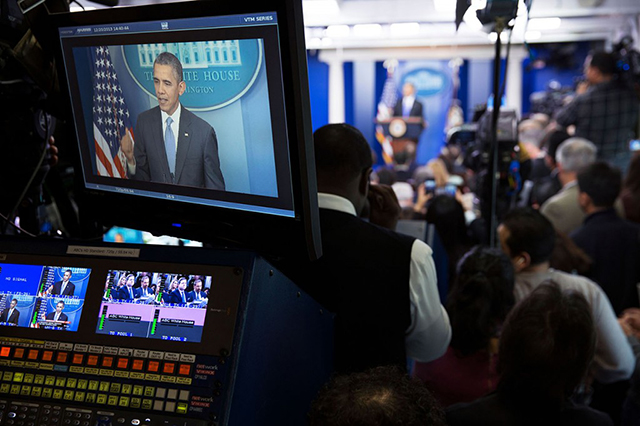A CBO report this week projected that under Obamacare, the collective reduction in hours worked by millions of Americans would be equivalent to a loss of 2.5 million full-time workers. Both Jason Furman, Chairman of the Council of Economic Advisers at the White House and Alex Wagner of MSNBC have cited the Heritage Foundation scholarship published in 2008 on the clear benefits of the portability of health insurance–the ability of individuals to carry health insurance from job to job without a tax or regulatory penalty. Most economists agree that job lock is a flaw in the current employer based health care system and Heritage has long advocated for policies that end job lock and increase mobility between jobs. But the specific policies that achieve that objective matter greatly because of the different incentives they create.
On the critical issue of policy, the White House and MSNBC are comparing apples and oranges. The Heritage paper focused on the impact of Senator John McCain’s 2008 universal tax credit proposal, which was a flat tax credit ($2500 for an individual, $5000 per family). The credit would be available to every American, regardless of income, employment or tax liability. It would have leveled the playing field for health insurance, creating a national market and allowing normal free market forces to function in health insurance. This tax credit would have applied to all Americans’ insurance, including those with employer sponsored insurance (ESI).
Health benefits, like wages, are a form of compensation. When health benefit costs decrease, wages increase. Workers, therefore, who choose to purchase their own insurance with a tax credit would see their wages increase as their employer’s health care costs decrease. Furthermore, the tax credit would have been financed by replacing the current tax exclusion for ESI.
The structure of the Obamacare tax subsidies for insurance is entirely different from a flat tax credit, and as CBO strongly emphasized, will discourage work. Obamacare’s subsidy structure complicates the tax treatment of health insurance even further and creates an unlevel playing field between employment based coverage and plans in the exchanges. Conceptually, the Obamacare subsidy scheme more closely resembles a welfare program than a tax credit program.
But beyond the tax subsidy structure, what most differentiates Obamacare from all other health care tax credit proposals are two of its other key features– the employer mandate and Medicaid expansion–which will have significant negative effects on workers and incentives to work. The employer mandate encourages employers near the threshold of 50 workers to stay below that number, while also encouraging employers to keep hourly workers below the 30 hour per week threshold. Obamacare’s Medicaid expansion extends coverage up the income scale, further discouraging work—particularly among the half of the expansion population that consists of able bodied young adults (19-34) without dependent children. In contrast, the McCain plan would have decreased Medicaid enrollment by an estimated 5.4 million, as those people would have gained private coverage. Obamacare also imposes harmful tax increases and give businesses disincentives to hire more workers.
The structure of Obamacare’s subsidies for health insurance in the exchanges differs radically from proposals for tax credits commonly proposed by conservative or centrist policy analysts. Conservative reformers, Heritage among them, aim at making health care financing mechanisms predictable, fully transparent, and designed clarify the true costs of health care and increase the range of competitive choices. The entire approach is to create strong incentives for individuals to secure value for their health care dollars and economize in health care spending. Obamacare does exactly the opposite.




























